
Image: Art Virtue
When ink was a precious commodity, before the days of ready-mixed ink pots, it was preserved in solid sticks (inksticks), ready to be ground and mixed with water for use by calligraphers and artists. The Chinese would use inkstones as mortars for grinding their inksticks, which was combined with a few drops of water and stored as ink in a small well on the inkstone itself.
Despite the inkstone's practical applications, it meant more to the Chinese than any tool to a western artist today. The inkstone was a prized, revered object, believed to embody the soul of the artist's studio or scholar's library. Each one was designed to fit seamlessly with other artefacts and antiques in its room.
Highly Embellished Duanshi Inkstone
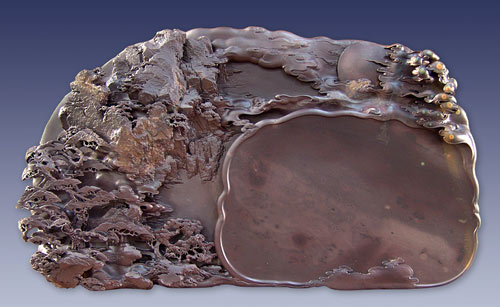
Image: Art Virtue
The first inkstones were produced during the Tang dynasty (618-905), becoming ever more embellished as the years went by. Inkstone production reached its creative peak during the reign of Emperor Qianlong (1736-1799), who himself amassed a vast imperial collection of inkstones, many of which can still be found in the Palace Museum in Taiwan.
Inkstone Carved Into Turtle Shape
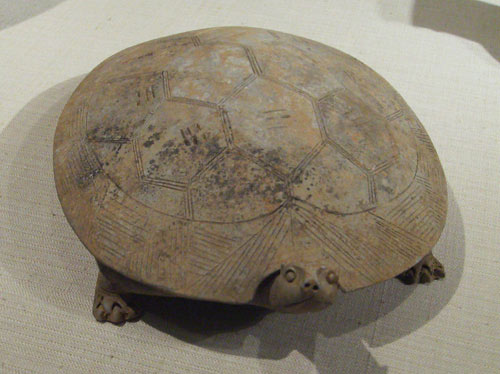
Image: peterjr1961
Inkstone, together with brush, ink and paper, make up the “Four Treasures of the Study”, the four elements vital to traditional East Asian calligraphy. Surprisingly, of the four, the inkstone was the most highly valued in Chinese society, considered most vital to the production of top quality ink, even more so than the ink itself!
The Four Treasures of the Study
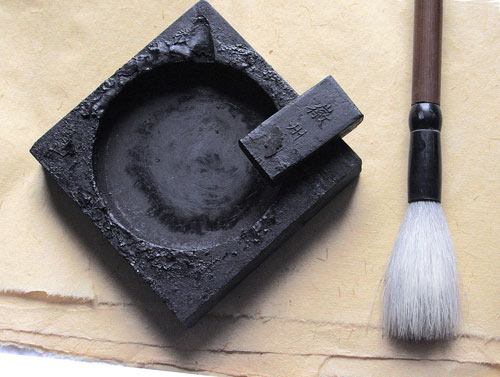
Image: 必荣
There are four major types of inkstone. The raw materials for each were selected with the utmost care and scrutinised for imperfections. They are the Duanshi stone (from Duanxi, Guangdong), made from a dark-purple volcanic rock; the She stone (from She County, Anhui), made from black slate with gold-coloured markings; the Chengni stone, a manufactured ceramic stone.
Duanshi Fish Inkstone
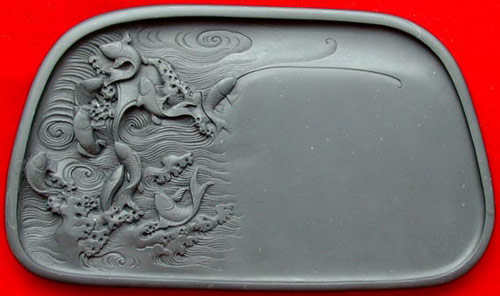
Image: VeduChina.com
The fourth and most highly prized of all is the Tao River Stone (from South Ganshu), which is crystalline and green in colour, like jade, gathered from the bottoms of ancient rivers.
Tao River Inkstone
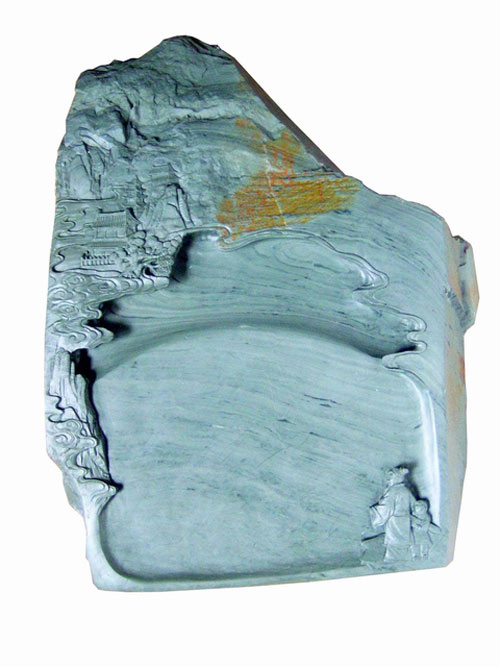
Image: Dunhuang Art
Once selected, the raw stone was carved into the most ergonomic and attractive shape. While most are rounded or rectangular, they feature a wide variety of carved patterns and symbols.
Intricately Carved Tao River Inkstone
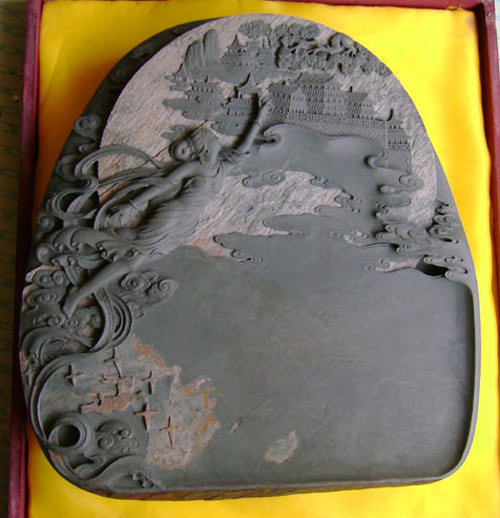
Image: Dunhuang Art
Some even include worded phrases, thought to elevate the artist or scholar's work to a higher level. In short, the inkstone was (and still is) as much a work of art in itself as anything it was used to create.
Plain Inkstone
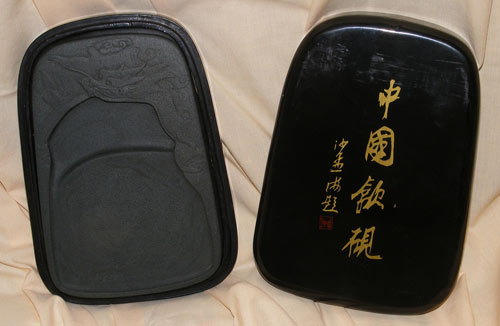
Image: barefootchef
Despite their ornamental designs, most inkstones seem understated and somewhat plain to the untrained eye. Nevertheless, they are highly collectable in China, fetching huge sums of money. An inkstone's real beauty only truly becomes apparent with an understanding of its centrality to the lives of artists and academics of centuries past.
To hold an inkstone, after all, is to cradle an object pivotal to all ancient Chinese artistic and academic output.
